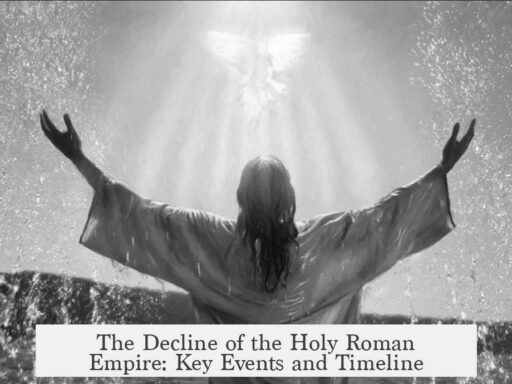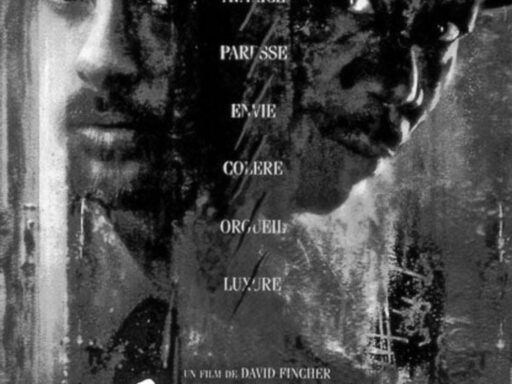Orcs, ogres, and onis share some superficial similarities in name and appearance, but these similarities largely arise from coincidence, linguistic evolution, and common human fears rather than direct translation or shared origin.
Orcs are a creation of modern literature, first popularized by J.R.R. Tolkien. They are not traditional mythological creatures but his invention. Based on his own descriptions and artistic collaboration, orcs are typically scrawny, dark creatures. Tolkien shifted their identity from earlier folklore goblins, seeking a name he found more fitting. The word “orc” traces back to Old English and Latin roots linked to demons or underworld gods but was adapted mainly for its phonetic effect and narrative use. Thus, orcs have no authentic mythical past akin to ogres or onis.
Ogres, conversely, enter English as a French loanword. The term “ogre” came into use relatively late and serves to translate various brutish, large monsters from other cultures’ folktales. Ogres represent a broad artistic and linguistic invention rather than a consistent oral tradition. Because early modern English lacked many words for monsters, “ogre” filled a linguistic gap, even though traditional English folk might not have used it. The ogre concept probably draws on multiple sources, mixing folklore and artistic imagination, particularly from French and Italian mythologies, as the word has links to “orco” and the Latin “Orcus.” Yet, these links do not imply a direct equivalence to orcs or onis.
Onis are firmly rooted in Japanese folklore as indigenous mythological creatures. Unlike orcs and ogres, onis appear in established oral traditions and local belief systems. Visual and thematic aspects of onis—often large, horned demons—differ culturally and symbolically from Western orcs and ogres. Their comparisons are largely superficial. The Japanese oni has its own unique history and cultural meaning, independent of European orcs or ogres, so linguistic similarity is coincidental rather than derived from a shared source.
The similarity in the names “orc” and “ogre” might suggest a connection, but this mainly results from their coincidental linguistic roots. “Orc” derives from Old English or Latin terms related to demons, while “ogre” comes from French and Italian adaptations of similar Latin myths. Their phonetic closeness sparked some cross-cultural borrowing and semantic overlaps in monster vocabularies but does not indicate common origin. Orcs started from goblins in folklore, a lineage distinctly separate from ogres.
English’s historically limited vocabulary for monsters caused many foreign terms, like “ogre” and “troll,” to be absorbed late in its evolution. These borrowings muddle direct lineage comparisons and show how cultural exchange and linguistic necessity shaped monster names without requiring shared mythic origins.
Commonalities in appearance and characteristics across these monsters reflect broader psychological and cultural patterns. Human cognition relies on recognizing patterns, which encourages seeing similarities even among diverse myths. Monsters worldwide tend to embody primal fears: of the unknown, of dangerous outsiders, or of threatening forces. These fears impose constraints on how creatures are imagined in folklore, leading to recurring themes such as hybrid humanoid/animal forms or grotesque features.
Each culture’s monsters remain tied to what local people deem believable or meaningful. For example, European folklore does not entertain multidimensional beings with bizarre anatomies. The constraints of oral tradition and cultural context ensure that monstrous figures fall into recognizable patterns, even when reinvented differently.
In summary, orcs, ogres, and onis resemble each other in name and form due mainly to independent developments shaped by language, artistic invention, and common human psychological patterns. They do not share a unified mythological origin nor arise from simple translation. Their appearances express universal fears manifested differently according to each culture’s modes of storytelling and belief.
| Monster | Origin | Name Source | Cultural Context | Relation to Others |
|---|---|---|---|---|
| Orc | Modern literary (Tolkien) | Old English/Latin root, reinvented | Western fantasy literature | Distinct from ogres and onis |
| Ogre | French loanword to English, artistic invention | French *ogre* from Italian *orco* and Latin *Orcus* | European folklore, late lexical adoption | Some linguistic overlap with orc name only |
| Oni | Indigenous Japanese folklore | Native Japanese term | Traditional Japanese oral and cultural stories | No direct link to orcs or ogres |
- Orcs are literary inventions with names adapted from ancient words for demons but unrelated to ogres or onis.
- Ogres entered English late as a French word, used broadly to translate various brutish monsters rather than from direct oral tradition.
- Onis are authentic mythological creatures in Japan, culturally and linguistically separate from Western monsters.
- Similar names arise from Latin roots and phonetic coincidences, not shared mythology.
- Monsters’ similar appearances largely reflect universal human fears and cognitive pattern-making rather than direct connection.
- Each culture’s folklore shapes monsters within believable frameworks, causing variations despite apparent parallels.
Orcs, Ogres, and Onis: Mythological Twins or Distant Cousins in Monster Lore?
Ever wondered why orcs, ogres, and onis seem like the three musketeers of monstrous mischief in global stories? They all sport grotesque appearances, bear names strikingly alike, and often play the villain’s role. But are these similarities a product of translation mix-ups, or just a coincidence woven by human imagination? The names and looks of these creatures mostly arise from coincidence, separate origins, and the shared human instinct to personify fears as monsters—not from a single root or mere translation errors.
Let’s peel back the. veil on these fascinating beasts and unravel their tangled histories.
The Outsider Among Monsters: Orcs, the Literary Upstart
First things first, orcs are not your traditional mythological beasts. Instead, they are a literary concoction brewed by J.R.R. Tolkien. That’s right—no ancient campfire stories or folklore passed down generations. Tolkien, inspired by Old English words and a pinch of Latin underworld myths, gave birth to orcs as scrawny, dark creatures best known from “The Lord of the Rings.”
This origins story makes orcs relatives of goblins in Tolkien’s universe—not ogres. Tolkien himself stated he ditched “goblins” for “orcs” because goblins just didn’t fit his vision. So, if you picture an orc as a lumbering ogre-like brute, you’re straying into the realm of modern fantasy mixing.
Ogres: The Artistic Migrants With French Flair
Ogres, meanwhile, waltzed into English thanks to French import. The word ogre is a relatively latecomer in English, adopted around the 18th century mainly because English lacked a catchy term for big bad monsters. The French “ogre” itself is connected to Italian orco, likely inspired by the Latin god of the Underworld, Orcus.
Unlike orcs, ogres don’t dwell solely in literary invention or specific folklore. Instead, they’re part artistic invention, part borrowed symbol representing brutish giants in fairy tales and folklore from various cultures, often translated loosely as “ogres” in English collections. These creatures tend to be large, ugly, and eat humans—enough to send chills down any kid’s spine during bedtime stories.
The Indigenous Oni: Japan’s Unique Demon
Now, onis hop in from a completely different continent and a deep cultural well. Unlike orcs and ogres whose names and appearances travel and transform across cultures, Japanese onis are deeply rooted in local oral tradition and folklore. These demons often resemble horned ogre-like creatures, sometimes with wild hair and bright red or blue skin.
Though onis resemble ogres and orcs superficially, they don’t share a common origin or literary lineage with them. They symbolize various themes in Japanese culture, from punishers of evil to frightening warnings, and have very distinct cultural identities.
Names That Sound Alike—Coincidence or Linguistic Cousins?
The similarity in names like orc and ogre might make you suspect a common origin. There’s some linguistic flirting in the background. Tolkien’s orc takes its cue indirectly from Old English “orc,” meaning demon, and the Latin “Orcus,” god of the underworld, which also inspired Italian “orco” and French “ogre.”
So, in a linguistic twist, orcs and ogres might share distant relatives in language history but diverge sharply in myth and usage. Meanwhile, onis spring from an unrelated Japanese linguistic branch.
Further complicating things, English’s monster vocabulary is surprisingly poor historically. Borrowings like “ogre” and “troll” came late, imported because English lacked snappy monster labels suitable for literary and popular use. The result? A linguistic toolkit that mixes terms from various cultures without a strict one-to-one translation.
Why Do They Look So Similar? The Shared Monster Blueprint
Have you noticed that orcs, ogres, and onis all share traits like big teeth, wild hair, and an inclination to frighten and menace humans? This isn’t just a coincidence or copy-paste job of ancient cultures copying each other. It’s a psychological blueprint.
Human beings shape folklore and myth based on what they can imagine and find believable within their cultural context. We tend to conceive monsters as giant human-animal hybrids with exaggerated fears like hunger, ugliness, or violence. Monsters resemble us, just twisted and wild, so the mind can grasp the fear.
This “pattern-making” is hardwired. Our brains excel at spotting similarities, so when humans across the globe craft monsters, the resulting creations often share common shapes and traits. But this convergence comes from universal human psychology, not from shared libraries of monster names.
Folklore Limits: What Became Monsters and Why
People don’t believe in monsters with hundreds of eyeballs or inter-dimensional puzzle pieces because such creatures defy cultural plausibility. Folktales stick to shapes and behaviors that resonate personally and socially within communities. A mean giant (ogre) or a demonish baddie (oni) fits well in many societies because these figures symbolize dangers familiar and imaginable.
Thus, while orcs, ogres, and onis may look alike and terrify in similar ways, the stories about them never transcend their cultural bounds enough to merge or share a universal origin. They echo the same human fears in distinct cultural voices.
What Can We Learn From These Mythic Cousins?
Understanding the roots of monsters like orcs, ogres, and onis tells us much about language, culture, and psychology:
- Language Evolution: Monster names travel and adapt across languages and time, sometimes preserving meaning, other times changing drastically.
- Cultural Identity: Each culture’s monsters express unique values and fears; onis are part of Japanese heritage, while ogres are a French import that gained broader usage.
- Human Fear Patterns: Monsters reflect primal human fears in physical forms that different societies independently develop.
- Creative Invention: Tolkien’s orcs remind us that modern creators can invent creatures that feel rich and real by tapping into linguistic history and human psychology.
Practical Monster Trivia: Spice Up Your Next Fantasy Discussion
Next time you chat about fantasy creatures, here are handy nuggets:
- Orcs aren’t ancient myth monsters — they emerged in Tolkien’s mind, shaped by language and art.
- Ogres entered English late via French and act as a ‘catch-all’ for big bad brutes in fairy tales.
- Onis are distinct Japanese demons, not copies or translations of Western monsters.
- Similar appearances don’t imply shared origin—it’s about what humans find terrifying everywhere.
By teasing apart these distinctions, you’ll impress friends and better appreciate how mythology unfolds differently worldwide.
In Conclusion: Monsters Are Universal, but Their Stories Are Local
The resemblance between orcs, ogres, and onis is a curious blend of linguistic coincidence, cultural borrowing, and shared human psychological patterns. Each monster serves as a mirror to the cultural fears and storytelling traditions from which it springs, rather than as branches of a single monster family tree.
So, when the next monster tale pops up, ask: Is this a case of cultural translation or a fresh spin on age-old fears? That question leads you deeper into the fascinating maze of folklore, language, and imagination.


